
5-10 MAY, 2020
Exibition opening story
Igor Pjörrt , Egor Fedosov, Ana Zibelnik, Peter Funch
GUP: Guide to Unique Photography
Curated by Erik Vroons
GUP is an independent online platform and print magazine - established in 2005 and led by an editorial team of mixed backgrounds - that aims to connect communities around contemporary art and documentary photography. GUP promotes work from all over the world which stands out for its strong – unique – visual signature style and character.
Both online and in print, GUP produces compelling articles and other critical forms of writing related to the broad and dynamic spectrum of photography and the visual arts. Functioning as a ‘guide’, GUP also serves an international audience by highlighting a wide variety of recently or soon to be published (art)photobooks and to pinpoint relevant events (festivals, exhibitions, open calls, etc.) from around the world that are on the calendar.
One of the key assets of GUP is the promotion of talented emerging photographers. For this group show, Erik Vroons (Chief Editor GUP Magazine) has selected three young artists who have been featured in the latest print issue: GUP#64 (Feb-May 2020). Each of these artist presents one of their latest produced projects:
Gupmagazine.com
Igor Pjörrt – Betelgeuse
For Igor Pjörrt (b. 1996, Portugal), who developed a fascination for astronomy in his late teens, Betelgeuse serves as a metaphor for the fragility of a queer relationship. More specifically, he draws parallels between a dying star and the experience of first love – an overwhelming feeling that co-exists with an awareness of its unknown yet inevitable ending; a long-distance relationship without a sustainable future.
Betelgeuse is a red supergiant star in the Orion constellation that is nearing its death When Pjörrt started working on this project, he was in the process of moving from London to Lausanne to pursue a master’s in photography at ÉCAL. He applies his celestial ideas to photography, specifically the notion of his first relationship where “distance became somewhat of a force”. Light is an omnipresent facet in his work, and the orange and blue in these images – a mix of landscapes and portraits – reflect a transcendence, an uncertain passing from one state of being into another.
igorpjorrt.com
Egor Fedosov - 1:26-3:24
The works of Egor Fedosov (b. 2000, Russia), produced with using digital photography and post-processing techniques, are not just photography. His rather mysterious, high-contrast ‘rephotographs’ are reminiscent of the photocopied quality of ‘zines’ and are made according to such a printing concept.
The title refers to Genesis 1:26-3:24, the section in the Bible that tells the story of Adam and Eve, starting with the verse that says “Let us make mankind in our image, in our likeness, so that they may rule over the fish in the sea and the birds in the sky, over the livestock and all the wild animals, and over all the creatures that move along the ground.”
God created mankind in his own image and now the artist is appropriating the story to his own creative ends. Fedosov plays with the notion of Adam and Eve and their legacy, by showing them as infantile, childlike characters as if photographed by a night-vision camera. These archetypes resemble frantic nocturnal animals captured by a camera trap. Is this how the first man and woman lived, shortly before being expelled from the Garden of Eden and made responsible for the loss of human innocence?
www.fdsov.ru
Ana Zibelnik - We Are The Ones Turning
Ana Zibelnik (b. 1995, Slovenia), currently living in the Netherlands, has been awarded GUP New Dutch Photography Talent of the Year 2020. In her work in progress, We Are The Ones Turning, she explores the notion of how we deal with our own mortality or, an even more fundamental concept: the consciousness of time being limited. This existential recognition, of finding ourselves facing the clock, is visually translated by Zibelnik in images that express a mix of sentiment and science in the context of humans living a life towards its inevitable end.
“The title, We Are The Ones Turning, came from a book about physics by Carlo Rovelli. According to him, what we call ‘time’ is simply the measurement of change: if nothing changes, time would not exist,” Ana Zibelnik explains, when asked about the essence of this body of work. Rovelli’s theories confront us with the notion that time is merely a function of our ‘blurred’ human perception. He addresses the question: why can we know only the past, and not the future? The answer, in its essence: time is something that we can only experience as a one-way street.
Anazibelnik.format.com
Peter Funch - The Imperfect Atlas
Peter Funch (b. 1974, Denmark) addresses the passage of time and man’s continued and evolving effects on the environment. Appropriately, Funch explores the Anthropocene by employing a photographic technique invented at the height of the Industrial Revolution, that of RGB tri-color separations.
Featuring images captured during Funch’s various trips through the Northern Cascade Mountain Range, ‘The Imperfect Atlas’ is an ‘off’ recreation of landscapes and wilderness as depicted in the archive of vintage postcards and ephemera of the region that the artist had amassed throughout his travels.
With the use of satellites and maps Funch managed to find locations of vintage postcards of Mt. Baker and Mt. Rainier (gathered over the course of several years) and he then made deliberately imperfect recreations of these stunning ‘vistas’. Imperfect, because the breathtaking images of landscapes and wilderness in the Northern Cascade Mountain Range as seen on the collected postcards no longer exist exactly as depicted at the time.
The pictures are as beautiful as they are worrisome.

 Programme
Programme
 Programme
Programme
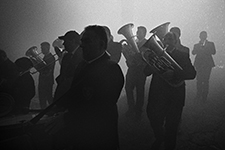
 Georgian National Museum
Georgian National Museum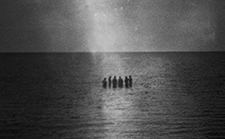
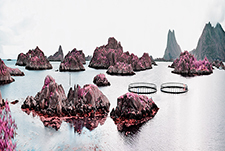
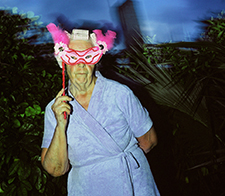
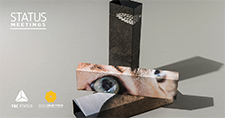
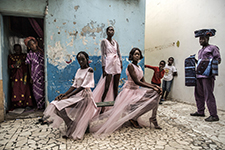

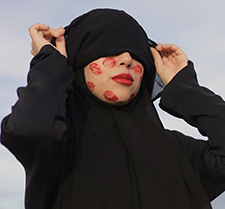
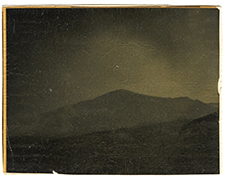
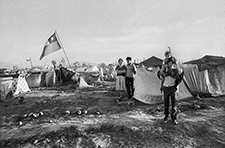
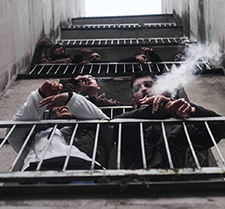
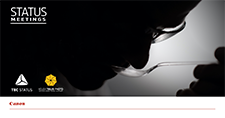

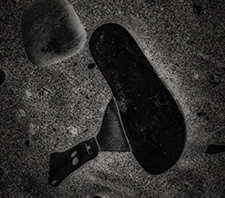
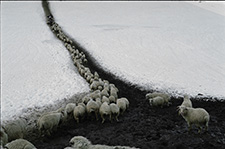
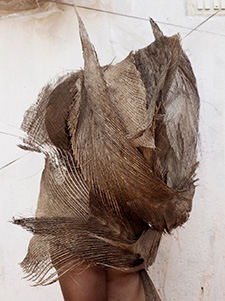
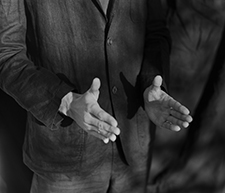
 Next to Peace Bridge
Next to Peace Bridge













